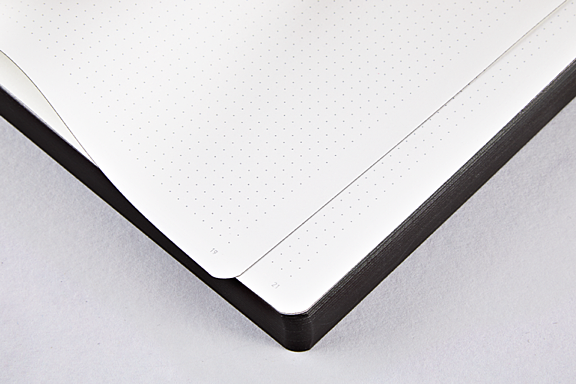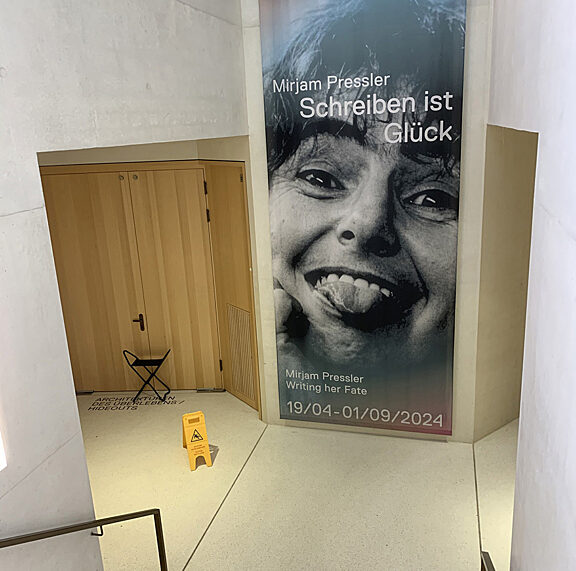Open thread stitch
inspiration, brandbook
For purists and designer, who follow the principle of reduction, there is nothing more beautiful than an open book spine.

It shows what normally is hidden: folded paper sheets, collating marks as well as thread stitches. Normally plain notebooks do not include collating marks because the sheets break down a certain chronological order. The flashiest features of open spines are threads – the colours can be coordinated according to the book project.
In order to make the “construction” of the book visible, open book spines are often combined with coloured threads. Therefore the layer structure of the inner book remains visible.
To protect the book spine permanently we recommend the application of a clear glue layer. Also an inscription into uncovered book spines is in the realms of possibility. During the puritanical method the inscription gets created out of collating marks. With this method the inscription is interrupted as you can see at the example of the “Verzettelt”-book.
On the other hand there is the possibility to inscribe the open book spine by screen printing. Also this method includes interruption within the writing or image because the open book spine does not come as a flat surface.
In order to make the “construction” of the book visible, open book spines are often combined with coloured threads. Therefore the layer structure of the inner book remains visible.
To protect the book spine permanently we recommend the application of a clear glue layer. Also an inscription into uncovered book spines is in the realms of possibility. During the puritanical method the inscription gets created out of collating marks. With this method the inscription is interrupted as you can see at the example of the “Verzettelt”-book.
On the other hand there is the possibility to inscribe the open book spine by screen printing. Also this method includes interruption within the writing or image because the open book spine does not come as a flat surface.



